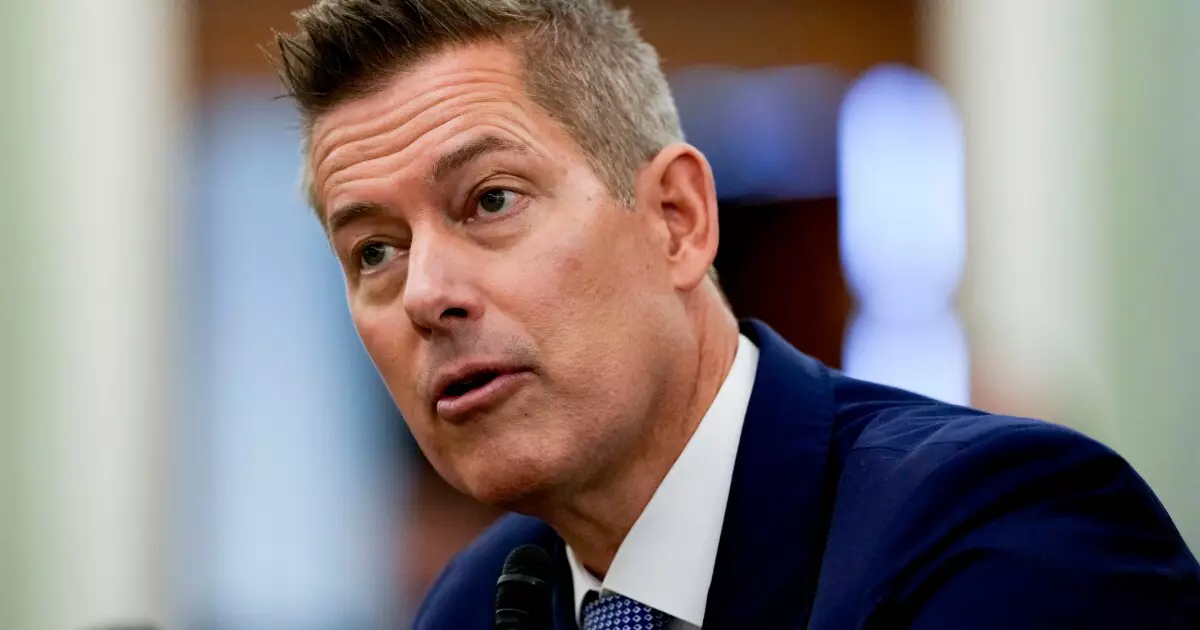Recent developments from the U.S. Department of Transportation (DOT) indicate a critical reevaluation of the nation’s approach to infrastructure funding. Under the current leadership, there’s a marked shift away from the intricate web of environmental stipulations and social equity demands that dominated past projects. Instead, the focus is returning to straightforward financial formulas that facilitate robust infrastructure improvements. This is a necessary pivot that prioritizes practicality over political idealism, an essential move as our transportation systems face an array of pressing challenges.
Sean P. Duffy, the U.S. Transportation Secretary, articulated this new direction succinctly. By pushing back against the regulatory complexities imposed by the previous administration, Duffy emphasized the need to “get back to basics.” This mantra reflects a broader sentiment among many Americans who are tired of seeing infrastructure needs sidelined by debates on environmental and social metrics. Instead of diluting funds with multifaceted qualifiers, the emphasis should be on efficiently building and maintaining critical transportation structures to foster economic growth and public safety.
Restoring Federal and State Dynamics
The rescission of previous memorandums related to greenhouse gas emissions and equity initiatives signifies a renewed respect for the historical framework underpinning the Federal-aid Highway Program. This system was designed to incorporate a symbiotic relationship between federal funding and state administration—a relationship that has been overshadowed by recent federal overreach.
Advancements in transportation depend on local knowledge and capabilities. Alex Etchen from the Associated General Contractors of America highlights that the rescinded policies had introduced unnecessary complications, causing uncertainty in the construction industry. Instead of convoluted mandates, we need to empower states to make decisions based on their unique circumstances, ultimately enabling faster and more effective infrastructure development.
The importance of this approach becomes even more pronounced as lawmakers begin to strategize for the reauthorization of surface transportation legislation. The struggles surrounding the Highway Trust Fund, which teeters on the brink of insolvency, underscore the need for reform. The current gas tax structure, unchanged since 1993, necessitates a conversation that explores viable solutions to sustainably fund our transportation infrastructure.
Confronting Evolving Challenges
In addition to infrastructure finance reforms, the discussion must address the rising dangers on our roads and at airports. With recent incidents of serious accidents and operational mishaps making headlines, the urgency to bolster safety measures cannot be overstated. Duffy’s announcement of an investigation into Diversity, Equity, and Inclusion (DEI) hiring practices at the Federal Aviation Administration (FAA) suggests a pivot in priorities. While diversity in hiring is essential, it should not eclipse the central responsibility of ensuring safe travel for all.
Revisiting the allocation of resources towards traditional road maintenance and infrastructure rather than trendy projects like bike lanes is a call echoed by House Transportation and Infrastructure Committee Chair Sam Graves. The focus points towards a clearer delineation in spending priorities, restoring the stability of our roadways and bridges, which are the backbone of national commerce and public mobility.
A Centralized Approach to Taxation
It is crucial that as policymakers gravitate towards more formula-based funding, they also reassess the contributions from emerging vehicle classes, particularly electric cars that are currently exempt from fuel taxes. A sustainable funding structure for our transportation system must adapt to evolving automotive technologies. Creating a system where electric vehicles contribute equitably towards transportation funds will ensure a stable fiscal environment as we move forward.
Moreover, the push for these reforms comes backed by organizations like AASHTO, which have long advocated for state-driven initiatives complemented by federal support. The bipartisan support for a move away from discretionary funding underlines a mounting consensus: the complexity of government grants should not inhibit the essential task of maintaining and improving U.S. infrastructure.
The renewed commitment to prioritize effective, formula-based funding for American infrastructure represents a promising turn in U.S. transportation policy. For too long, the narrative around infrastructure has been dominated by ideological debates that have undermined practical needs. Embracing a straightforward, efficient approach to transportation funding today will pave the way for a more reliable, safer, and economically viable future.

